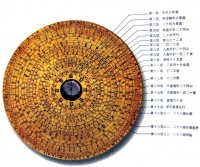Chapter 54: 525-541
Contents
Page 525
Maquilleuses
Make-up Artist
"ev'ryone here has serv'd upon that Station"
See page 158.
Page 527
The Ghastly Fop
Here we finally learn what the Ghastly Fop is all about.
Also, see pages 178, 347 & 457.
Hampstead
Hampstead is an area of London, England, located 4 miles (6.4 km) north-west of Charing Cross. It is located within Inner London. It is part of the London Borough of Camden. It is known for its intellectual, artistic, musical and literary associations and for the large and hilly parkland Hampstead Heath. It is also home to some of the most expensive housing in the London area, or indeed anywhere in the world, with large houses regularly listed for sale at over twenty million pounds. The village of Hampstead has more millionaires within its boundaries than any other area of the United Kingdom. From WIKI
One Motrix
See page 451.
Ranelagh
Ranelagh Gardens were public pleasure gardens located in Chelsea, then just outside London, England in the eighteenth century, named after Ranelagh House, home of the Cole family, who took their title (Earls of Ranelagh) from the district in County Dublin. From WIKI
Thornton-le-Beans
See page 232.
Slad
See page 502.
largely Paper Vengeance, he not only traverses...
Writing injustice largely on paper with that Pynchon word.....what reminds
thee of?
Grub-Street
See page 500.
Page 528
their Wonderful Telegraph
See page 515.
Bolsters
A bolster (etymology: Middle English, derived from Old English, and before that the Germanic word bulgstraz) is a long narrow pillow or cushion filled with cotton, down, or fibre. From WIKI
Berm
A berm is a level space, shelf, or raised barrier separating two areas. Berm is a loanword from Dutch. From WIKI
Page 530
Zhang
First mentioned on page 142.
Page 531
Six Nations
See page 513.
gain'd the Mohawk
Mohawk meaning "eaters of men" (Kanienkeh, Kanienkehaka or Kanien’Kahake, meaning "People of the Flint") are an indigenous people of North America originally from the Mohawk Valley in upstate New York to southern Quebec and eastern Ontario. From WIKI
Captain Zhang
See previous page.
Luopan is a Chinese magnetic compass, also known as a Feng Shui compass. It is used by a Feng Shui consultant to determine the precise direction of a structure or other item. Since the invention of the compass for use in Feng Shui, traditional feng shui has required its use. From WIKI
Fort Stanwix
Fort Stanwix was a colonial fort whose construction was started on August 26, 1758, by British General John Stanwix, at the location of present-day Rome, New York, but was not completed until about 1762. The fort guarded a portage known as the Oneida Carrying Place during the French and Indian War. From WIKI
Johnson Castle
During the second and third quarters of the 18th century, most of the Mohawks in the Province of New York lived along the Mohawk River at Canajoharie, a few lived at Schoharie, while the rest lived about 30 miles downstream at the Ticonderoga Castle also called Fort Hunter. The two settlements were traditionally called the Upper Castle and the Lower Castle. The Lower Castle was almost contiguous with Sir Peter Warren's Warrensbush. Sir William Johnson built his first house on the north bank of the Mohawk River almost opposite Warrensbush. From WIKI
Page 532
Irish Baronet
A baronet (traditional abbreviation Bart, modern abbreviation Bt) or the rare female equivalent, a baronetess (abbreviation Btss), is the holder of a hereditary title awarded by the British Crown known as a baronetcy. The current practice of awarding baronetcies was originally introduced in England and Ireland by James I of England in 1611 in order to raise funds. From WIKI
Metallick Plate
As it progressed, the expedition sought to strengthen France's claim to the territory by marking it at the mouths of principal tributaries. They did this by nailing a tin or copper plate bearing the French royal arms to a tree, and burying an inscribed leaden plate declaring the claims of France. This was a traditional European mode of marking territory, but it might have contributed to Native American anxieties about the intentions of the French, and thus ultimately had a counterproductive effect. From WIKI
Remember Washington's discussion with M&D, mentioning Celeron de Bienville. See page 285.
Sir William
Sir William Johnson, 1st Baronet (c. 1715 – 11 July 1774) was an Irish-born official of the British Empire. As a young man, Johnson came to the Province of New York to manage an estate purchased by his uncle, Admiral Peter Warren, which was located amidst the Mohawks, one of the Six Nations of the Iroquois. Johnson learned the Mohawk language and became New York's agent to the Iroquois. Throughout his career as a British official among the Iroquois, Johnson combined personal business with official diplomacy, acquiring millions of acres of Native land and becoming very wealthy. Johnson commanded Iroquois and colonial militia forces during the French and Indian War. His role in the British victory at the Battle of Lake George in 1755 earned him a baronetcy; his capture of Fort Niagara from the French in 1759 brought him additional renown. In 1756, Johnson was commissioned as the superintendent of Indian affairs for the northern colonies. Serving in that role until his death, Johnson worked to keep American Indians attached to the British interest. From WIKI
complicated Hand-shake
Masons
Page 533
mutatis mutandis
See page 179.
Page 534
Luo-Pan
See page 531.
